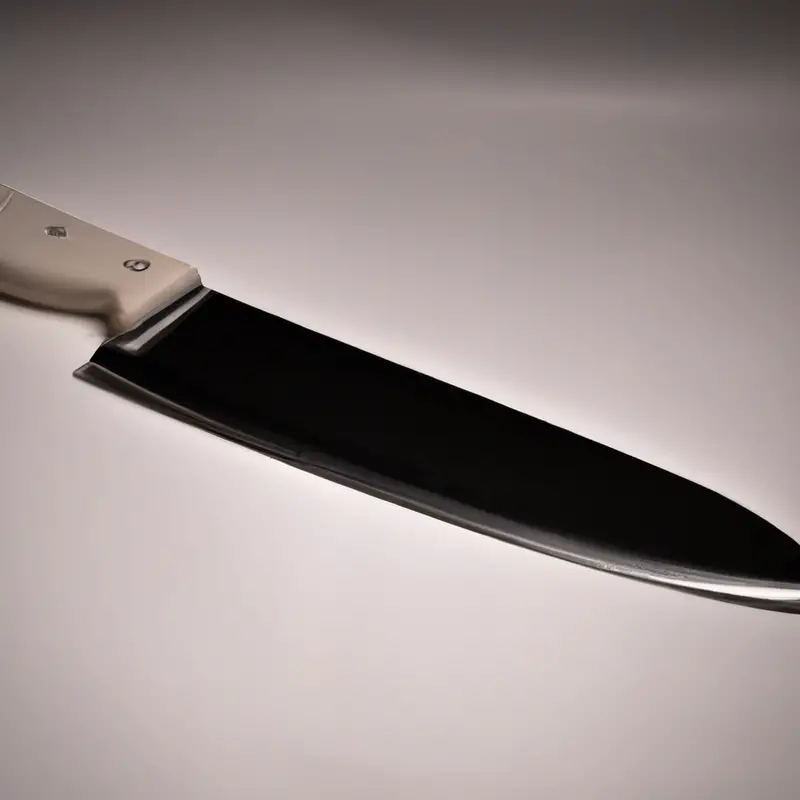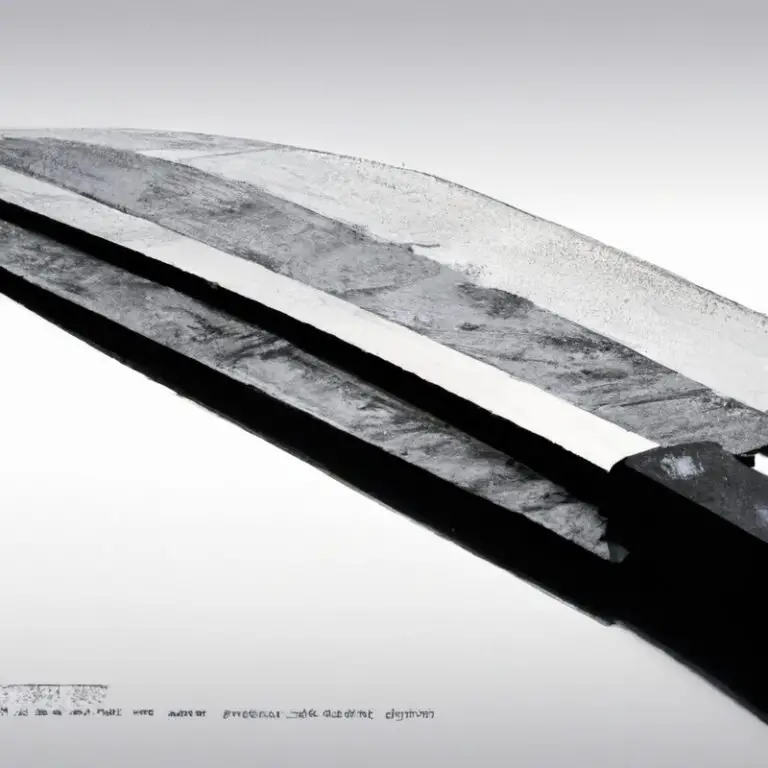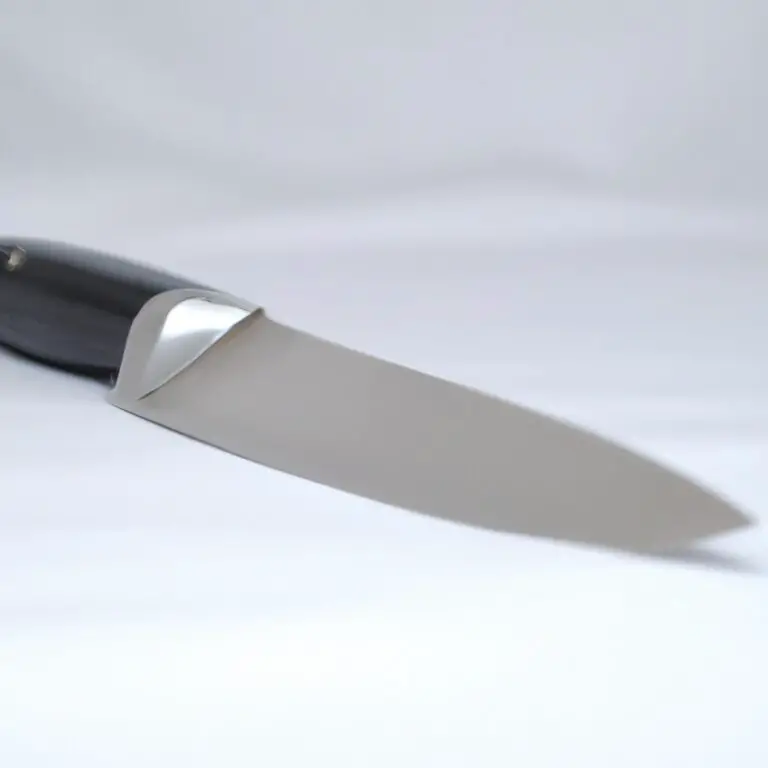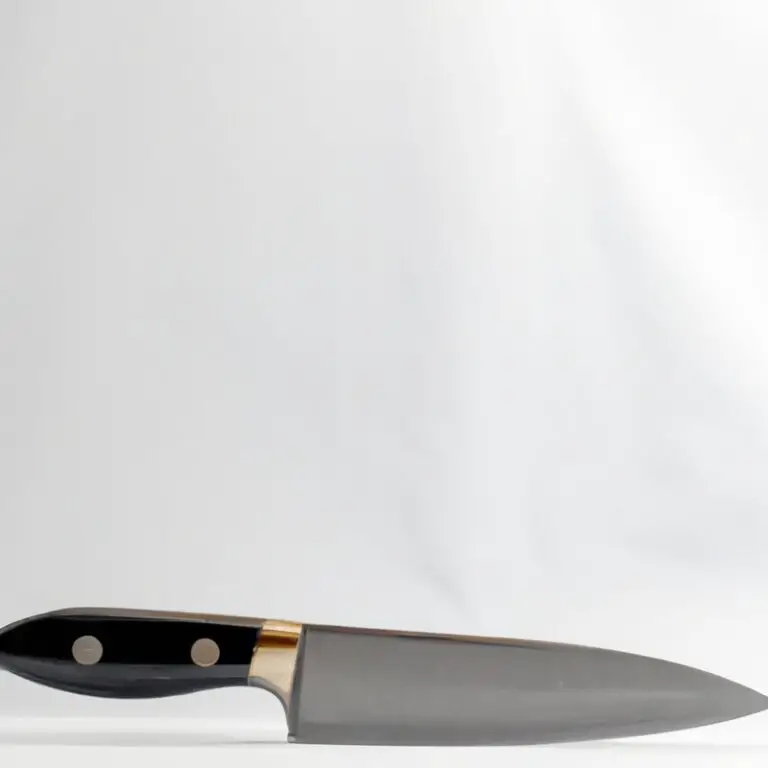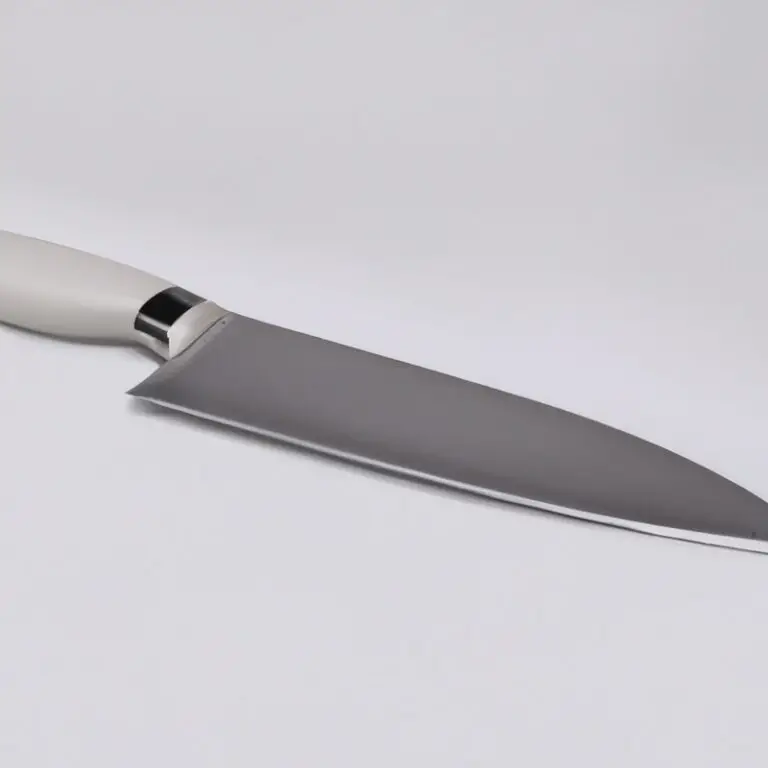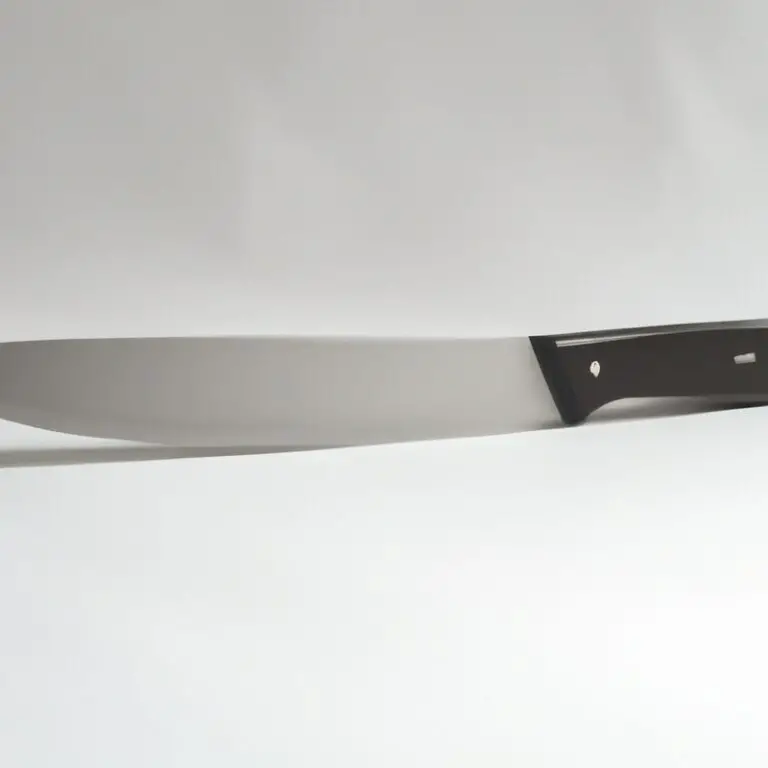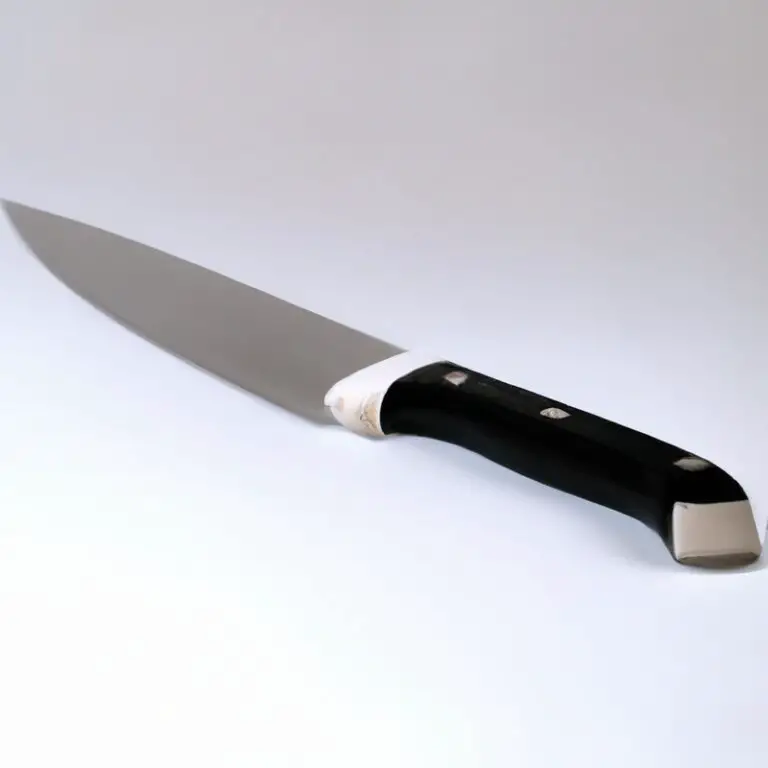How To Prevent a Chef Knife From Slipping During Use? – Easy Tips!
Key Takeaways:
- Maintain a secure grip on your chef knife by ensuring your hands are dry and clean.
- Use a cutting board with a non-slip surface to provide stability while using your knife.
- Keep your chef knife sharp to prevent slipping and reduce the likelihood of injury.
- Use a knife with a full tang and ergonomic handle design for optimal control and grip during use.
As a chef, the last thing you want is for your knife to slip while chopping, resulting in a disastrous injury. But accidents do happen, and that’s why it’s essential to know the proper techniques for holding a chef knife to prevent slipping.
Along with the right grip, keeping your knife sharp and choosing one with an anti-slip handle can increase safety and efficiency.
Additionally, wearing cut-resistant gloves and knowing how to cut different types of food can prevent accidents. In this article, we’ll explore these tips and more on how to prevent a chef knife from slipping during use and keep yourself safe in the kitchen.
| Tips to Prevent Slipping | |
|---|---|
| 1. | Ensure the handle is dry and clean before use. |
| 2. | Hold the knife with a firm and stable grip. |
| 3. | Use a cutting board with a non-slip surface or place a damp towel underneath. |
| 4. | Angle the blade properly while cutting for better control. |
| 5. | Sharpen the blade regularly to ensure smooth cutting. |
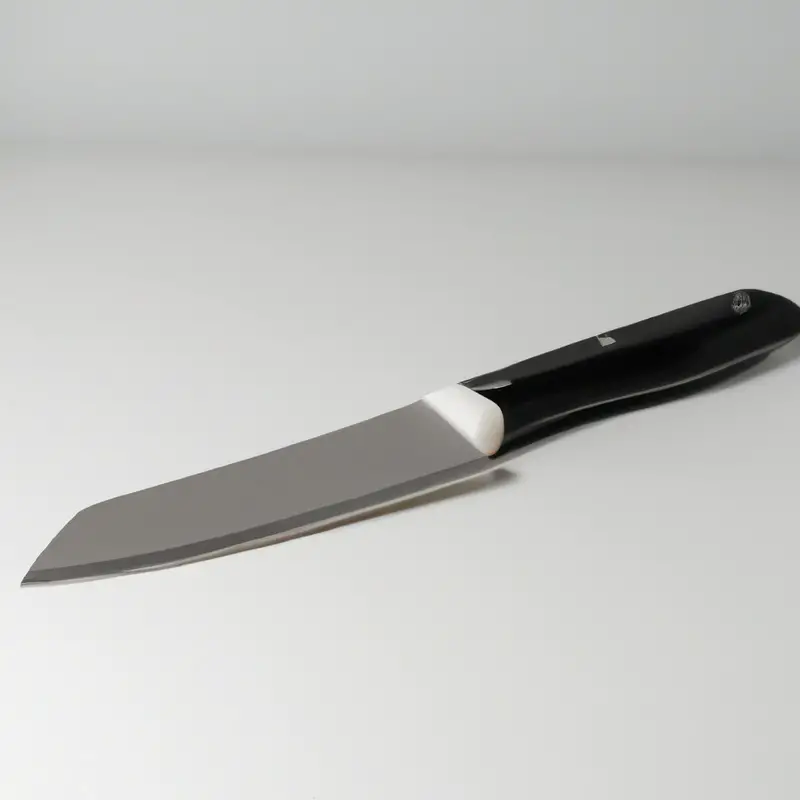
Proper grip technique for holding a chef knife to prevent slipping
Proper grip technique is crucial when using a chef knife to prevent it from slipping. The correct grip involves wrapping your fingers around the handle and curling them inward, covering the handle’s base.
The thumb should rest on the spine of the blade, opposite the index finger.
This grip provides stability and control while cutting, reducing the chances of a slip. Avoid gripping too hard, as this can tire your hand, and avoid holding the knife too lightly, as this can cause it to slip.
Remember to use your wrist and arm, not just the fingers, to maneuver the knife.
A firm grip and proper technique will help you maintain control of the knife, ensuring safety while cutting.
Importance of using a sharp chef knife to avoid slips
Using a sharp chef knife is crucial in preventing slips during use. A dull knife requires more force, which can cause the blade to slip and potentially lead to injury.
A sharp knife allows for smoother, more precise cuts, reducing the need for excessive pressure.
Additionally, a sharp knife can help prevent food from slipping while cutting. A dull blade can crush or tear food, making it more difficult to cut accurately and potentially leading to accidents.
Regularly sharpening and maintaining your chef knife ensures that it remains sharp and safe to use.
A dull knife can be dangerous not only for slips but also for accidental cuts when trying to apply too much force. Investing in a high-quality, sharp chef knife is essential for any home cook or professional chef.
It not only improves the safety of your cooking but also enhances the overall experience and quality of the food you prepare.
Benefits of using a rubber or silicone grip on the handle of a chef knife
Using a rubber or silicone grip on the handle of a chef knife can provide several benefits. The non-slip material ensures that the knife won’t slip out of your hand, even if your hands are wet or greasy.
This can help you maintain a firm grip, allowing you to make precise cuts and reduce the risk of accidents.
Additionally, a rubber or silicone grip can provide added comfort, making it easier to use the knife for extended periods. This is especially important for professional chefs, who may spend hours each day wielding their knives.
When choosing a knife with an anti-slip grip, consider the size and shape of your hand.
Some grips may be too small or too large, making them uncomfortable to use. Additionally, consider the overall weight of the knife–a heavier knife can cause hand fatigue over time, even with a comfortable grip.
In summary, using a rubber or silicone grip on your chef knife can provide added safety and comfort, making it easier to use your knife for extended periods without slipping or causing hand fatigue.
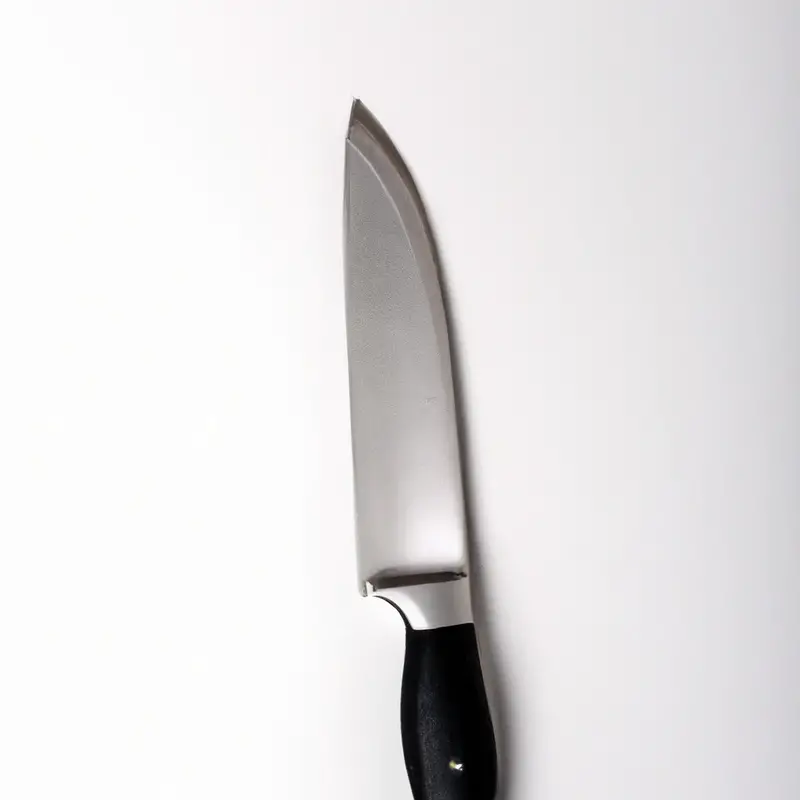
Factors to consider when choosing a chef knife with an anti-slip handle
When it comes to choosing a chef knife with an anti-slip handle, there are several factors to consider:
- Material: Look for rubber or silicone grips as they provide a non-slip grip even when wet. Avoid wooden handles as they tend to get slippery when wet.
- Shape and size: Choose a knife that fits comfortably in your hand. A knife that’s too large or small can be difficult to grip properly.
- Weight: A heavy knife can be difficult to control while a lightweight knife may not have enough momentum to cut through dense meats and vegetables.
- Blade construction: Opt for a full tang blade where the blade runs the full length of the handle. This adds durability and prevents the handle from separating from the blade.
- Brand reputation: Consider purchasing a knife from a reputable brand with a history of producing quality kitchen knives.
When choosing a chef knife with an anti-slip handle, keep these factors in mind to ensure you select a knife that is safe and comfortable to use.
The role of knife maintenance in preventing slips during use
Proper knife maintenance plays a crucial role in preventing slips during use. A dull knife requires more force to cut through food, which increases the chances of the knife slipping and causing an accident.
Sharpening the blade regularly with a sharpening stone or honing rod can prevent this from happening.
It is also important to clean the knife properly after each use and store it in a safe place to avoid damage to the blade or handle. Regularly checking the handle for any cracks or signs of wear and tear is also important to ensure the knife remains safe to use.
By taking care of your chef knife, you can prevent slips and ensure a safe and efficient cutting experience.
How to avoid placing too much pressure on the knife to prevent slips
To avoid placing too much pressure on a knife and prevent slips, use a knife that is sharp enough for the task. Applying too much force can cause the knife to slip, leading to accidents.
Hold the knife with a comfortable, relaxed grip and avoid using a tight grip.
Use a cutting board to stabilize the food and maintain a good balance while cutting. Let the weight of the knife do the work instead of applying excessive pressure.
Avoid twisting the knife as you cut, and keep your focus on the task at hand.
By following these simple steps, you can avoid placing too much pressure on the knife and prevent slips during use.
Benefits of wearing cut-resistant gloves for added safety
Wearing cut-resistant gloves while using a chef knife can greatly enhance safety in the kitchen. These gloves are specially designed to protect your hands from cuts and slashes while handling sharp knives.
Here are some of the benefits of wearing cut-resistant gloves:
- Prevents Cuts: The primary benefit of cut-resistant gloves is that they prevent cuts and lacerations while cutting with a sharp chef knife. Even experienced chefs can experience accidental slips which may result in serious cuts.
- Better Grip: Cut-resistant gloves offer better grip to hold the chef knife. They greatly reduce the possibility of your hands slipping from the handle, which in turn reduces the chance of accidents.
- Increased Confidence: Wearing cut-resistant gloves boosts confidence while using sharp knives. You can confidently handle the chef knife without the risk of painful nicks and cuts.
- Comfortable: Cut-resistant gloves are lightweight and comfortable, making it easier to perform your kitchen tasks.
Therefore, investing in a pair of cut-resistant gloves is a wise choice, especially for those working in fast-paced environments where time constraints and a lot of knives are used. A good quality pair of gloves can provide the necessary protection to prevent potential kitchen accidents.
Common mistakes to avoid while using a chef knife to prevent accidents
To prevent accidents while using a chef knife, it’s essential to avoid common mistakes. These include using the blade in a back and forth sawing motion, placing your fingers on top of the blade, and applying too much pressure when cutting.
Another mistake is using a dull knife or using the wrong knife for the task at hand.
Additionally, cutting on an unstable surface, such as a cutting board that moves around, can also result in accidents. To stay safe while using a chef knife, it’s important to avoid these mistakes and focus on proper cutting techniques.
Techniques for cutting different types of food to prevent slips
To prevent slips while cutting different types of food, it is important to adopt the appropriate techniques.
- Firmly hold the food using your non-dominant hand. This ensures that the food does not move around too much while cutting, thereby reducing the risk of the knife slipping.
- Keep the blade of the knife in contact with the cutting board while cutting. This helps to stabilize the knife and prevent it from slipping.
- Use a sawing motion for cutting hard or tough foods like carrots or squash. This motion provides more control and reduces the risk of the knife slipping.
- Cut round or irregularly shaped foods like tomatoes by first making a flat surface by cutting off a small portion. This helps to stabilize the food and prevent the knife from slipping.
- Cut large foods into smaller, more manageable portions before cutting. This ensures that the food is easier to manage and reduces the chances of the knife slipping.
By following these techniques, you can prevent the knife from slipping while cutting different types of food.
How to properly store a chef knife to maintain its safety and functionality
Proper storage of a chef knife is crucial for maintaining its safety and functionality. Keeping your knife in a designated area, like a knife block or magnetic strip, prevents it from getting damaged and keeps it out of reach from children.
It’s important to clean and dry your knife thoroughly before storing it to prevent rust and corrosion.
Always store your knife with the blade facing away from you or others to avoid accidental injury. Avoid storing your knife in a drawer with other utensils, as it can damage the blade and cause it to become dull.
It’s also crucial to keep your knife sharp, as a dull blade can cause slipping and harm.
Proper storage and maintenance of your chef knife not only increase its lifespan but also ensure its safety and functionality while in use.
Final Verdict
Preventing a chef knife from slipping during use is a crucial aspect of kitchen safety. By implementing proper grip techniques, choosing the right knife with an anti-slip handle, and regularly maintaining it, one can significantly reduce the risk of accidents.
Additionally, wearing cut-resistant gloves and mastering cutting techniques for different types of food can also significantly enhance safety.
Lastly, proper storage of the chef knife is essential to maintain its functionality. Remember that proper knife safety techniques are not only crucial for optimal performance in the kitchen, but also for avoiding potential injuries.
By following these guidelines, you can work confidently and safely in your kitchen, knowing that you have taken the necessary steps to prevent slips and maintain your credibility as a skilled chef.

